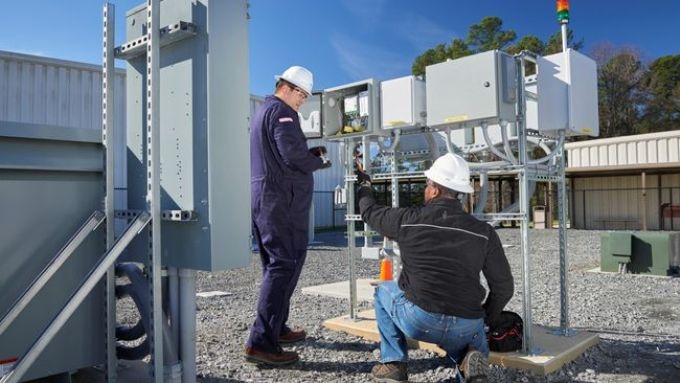Nov 2 2017
Duke Energy is planning to fix battery storage equipment and solar panels that will work as a microgrid at the Indiana National Guard's Camp Atterbury training operation in Johnson County, Ind. The company will also set up battery storage equipment at a substation in Nabb, Indiana, in Clark County.
 Credit: Duke Energy
Credit: Duke Energy
Projects plans must be sanctioned by the Indiana Utility Regulatory Commission before work can start. The microgrid at Camp Atterbury would be the first microgrid fixed at a National Guard facility in Indiana.
Given our recent success with the installation of a 17-megawatt solar power plant at Naval Support Activity Crane, we were eager to find another opportunity to join with the U.S. military to incorporate new technology into our grid operations, the project at Camp Atterbury will help us gain valuable operating experience and may help determine how best to expand the new technology to other areas.
Melody Birmingham-Byrd, Duke Energy Indiana state president.
Camp Atterbury, the Indiana National Guard and Duke Energy have worked together on several mutually beneficial projects over the years, this proposed project will increase our strategic value and give us the ability to continue our mission-critical operations in the unlikely event of a large grid outage.
Col. John Silva, Camp Atterbury's commanding officer.
A microgrid is a self-contained power system, limited to a small geographic area that has one or more power plants, which in most cases are fairly small in size. It may also have some means to store energy, such as batteries. Battery storage advantages include moving energy from lower-usage periods to higher-usage periods, as well as providing steadier grid frequency operation.
Duke Energy is a national leader in energy storage R&D, having deployed around 40 megawatts of energy storage capacity, signifying 15 national projects demonstrating 10 varied grid applications and functions and eight different battery chemistries.
At Camp Atterbury, the battery and solar panels will mainly provide grid advantages to customers in the area. In the unlikely event of a huge grid failure, the microgrid could carry on serving customer power demand. The storage battery possesses a capacity of 5 megawatts. The solar installation will produce approximately 2 megawatts.
At the Nabb, Ind., substation, a similar-size battery will be fixed near the current substation. This battery will also be used to provide grid advantages coupled with back-up customer power in the event of a grid failure.